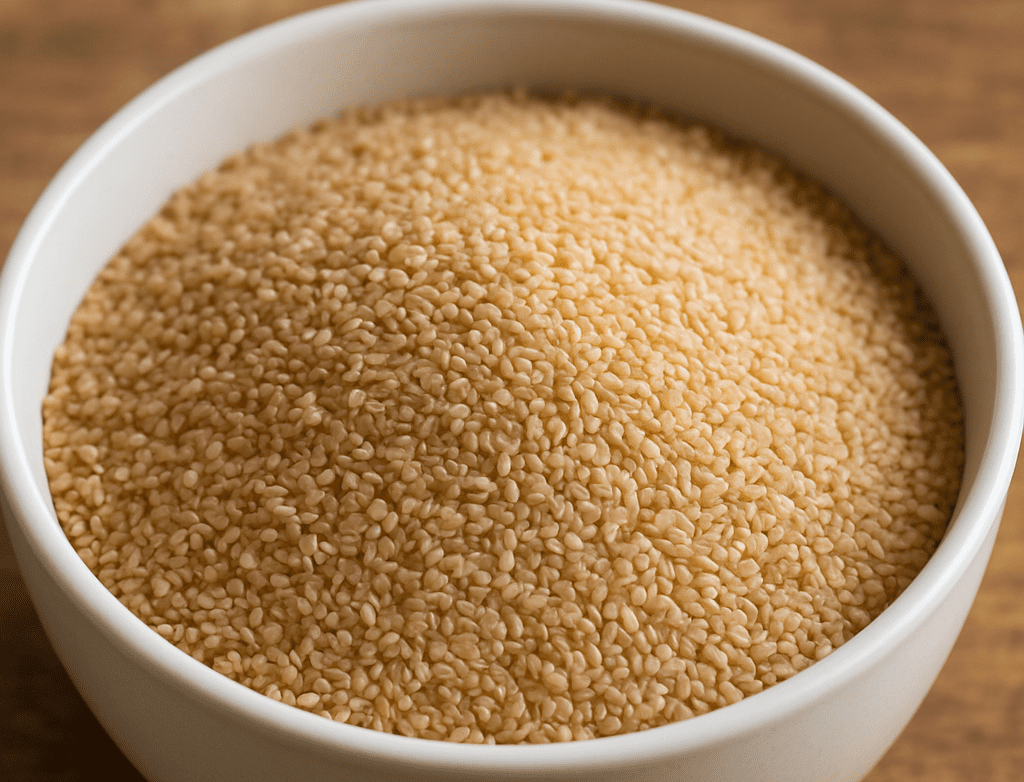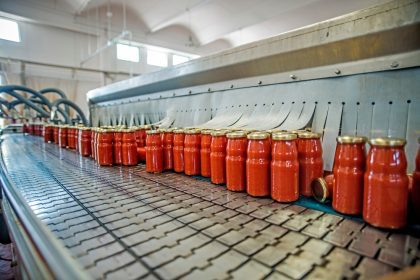Fonio has been quietly sustaining entire civilizations across West Africa for over 5,000 years, and now nutritionists are discovering why this tiny grain was considered so precious that it was reserved for royalty and special ceremonies. While the Western world obsessed over quinoa and chia seeds, fonio was delivering superior nutrition, incredible versatility, and environmental benefits that make other ancient grains pale in comparison.
The transformation of fonio from obscure African staple to global superfood represents one of the most exciting developments in nutrition and sustainable agriculture. This microscopic grain packs more nutrients per serving than most other grains while growing in conditions that would kill quinoa, making it both a nutritional powerhouse and a climate-resilient crop for the future.
What makes fonio particularly remarkable is its combination of complete amino acids, rapid cooking time, and naturally gluten-free properties that solve multiple dietary challenges simultaneously. This isn’t just another trendy grain—it’s a legitimate nutritional breakthrough that’s been hiding in plain sight for millennia.
The protein profile that’s revolutionizing plant-based nutrition
Fonio contains all essential amino acids in proportions that rival animal proteins, making it one of the most complete plant-based protein sources available. This amino acid completeness is particularly rare among grains, which typically lack one or more essential amino acids needed for optimal human nutrition.
The methionine and cysteine content in fonio is exceptionally high compared to other grains, providing the sulfur-containing amino acids that are often limiting in plant-based diets. These amino acids are crucial for detoxification, antioxidant production, and maintaining healthy hair, skin, and nails.
Fonio provides about 4 grams of protein per cooked cup, but the quality of this protein is superior to most grains due to its complete amino acid profile. The biological value of fonio protein approaches that of animal proteins, meaning your body can efficiently use it for muscle building and tissue repair.
The protein in fonio is easily digestible and doesn’t cause the digestive upset that some people experience with other grains or legumes. This digestibility makes fonio protein particularly valuable for people with sensitive stomachs or compromised digestive function.
Unlike quinoa, which contains saponins that require thorough rinsing to remove bitter compounds, fonio is naturally mild and doesn’t require special preparation to be palatable and digestible. This makes it more user-friendly for people new to ancient grains.
Nutrient density that puts modern grains to shame
Fonio is exceptionally rich in B vitamins, particularly thiamine, riboflavin, and niacin, which are essential for energy metabolism and nervous system function. These vitamins are often stripped from processed grains but remain intact in whole fonio.
The iron content in fonio is remarkably high, providing more bioavailable iron than most other grains and many vegetables. This makes fonio particularly valuable for preventing iron deficiency, especially in populations that rely heavily on plant-based diets.
Fonio contains significant amounts of zinc, which supports immune function, wound healing, and protein synthesis. The zinc in fonio is in a highly absorbable form that the body can readily utilize, unlike the zinc in some other plant foods that may be bound to compounds that inhibit absorption.
The magnesium content in fonio supports muscle function, bone health, and cardiovascular health while helping regulate blood sugar levels. This mineral is often deficient in modern diets but is naturally abundant in fonio.
Fonio also provides meaningful amounts of calcium, phosphorus, and manganese, creating a mineral profile that supports bone health and metabolic function. This mineral density makes fonio nutritionally superior to rice, wheat, and most other commonly consumed grains.
Blood sugar benefits that diabetes experts are celebrating
Fonio has a low glycemic index that helps maintain stable blood sugar levels, making it an excellent choice for people with diabetes or prediabetes. Unlike refined grains that cause blood sugar spikes, fonio provides sustained energy without dramatic glucose fluctuations.
The fiber content in fonio slows digestion and helps regulate blood sugar absorption, preventing the rapid spikes and crashes associated with many other grains. This fiber also promotes satiety and supports digestive health.
The complex carbohydrates in fonio provide steady energy without triggering excessive insulin responses. This makes fonio particularly valuable for people following low-glycemic diets or managing metabolic conditions.
Fonio’s blood sugar stability makes it an ideal base for meals throughout the day, providing consistent energy without the afternoon crashes that often follow meals based on refined grains or high-glycemic foods.
The protein and fiber combination in fonio creates a macronutrient profile that supports weight management and metabolic health while providing sustained energy for physical and mental performance.
Environmental advantages that make it the grain of the future
Fonio grows in poor soils and harsh climates where other grains cannot survive, making it incredibly resilient and sustainable. This hardiness means fonio can be grown in marginal agricultural lands without requiring intensive inputs or irrigation.
The drought tolerance of fonio makes it a climate-resilient crop that can provide food security in regions affected by climate change. While other grains struggle with changing weather patterns, fonio thrives in challenging conditions.
Fonio grows extremely quickly, reaching maturity in just 6-8 weeks compared to months for other grains. This rapid growth cycle allows for multiple harvests per year and provides food security in regions with short growing seasons.
The small size of fonio seeds means they can be grown in smaller spaces and require less water than larger grains. This resource efficiency makes fonio an environmentally sustainable choice for feeding growing populations.
Fonio naturally improves soil health and doesn’t require synthetic fertilizers or pesticides to grow successfully. This makes it an environmentally friendly crop that can be grown using sustainable agricultural practices.
Culinary versatility that makes healthy eating effortless
Fonio cooks in just 5 minutes, making it one of the fastest-cooking grains available. This convenience factor makes fonio practical for busy lifestyles while providing superior nutrition compared to instant processed foods.
The mild, nutty flavor of fonio complements both sweet and savory dishes without overpowering other ingredients. This versatility makes it easy to incorporate into existing recipes and meal plans.
Fonio can be prepared like rice, couscous, or quinoa, making it a direct substitute in familiar dishes. This familiarity reduces the learning curve for people wanting to incorporate more nutritious grains into their diets.
The texture of cooked fonio is light and fluffy, similar to couscous but with a slightly nuttier flavor. This pleasant texture makes fonio appealing to people who find other ancient grains too dense or chewy.
Fonio works well in both hot and cold preparations, making it suitable for everything from breakfast porridge to cold salads. This versatility allows for creative meal planning and seasonal menu variations.
Getting the most from this ancient powerhouse
Fonio requires minimal preparation—simply rinse briefly and cook in a 1:1 ratio with water or broth for 5 minutes. This simplicity makes it accessible to home cooks of all skill levels.
Quality fonio should have a light, uniform color and a pleasant, slightly nutty aroma. Avoid fonio that looks dusty or has an off smell, as this may indicate poor storage or processing.
Fonio can be prepared in larger batches and stored in the refrigerator for several days, making meal prep efficient and convenient. The cooked grain reheats well and maintains its texture and flavor.
Adding fonio to soups, stews, and casseroles increases the protein and nutrient content while providing a hearty texture that makes meals more satisfying. This versatility makes it easy to boost the nutritional value of existing recipes.
Fonio flour can be used in baking to increase the protein and nutrient content of breads, muffins, and other baked goods. This flour works well in combination with other gluten-free flours for people avoiding gluten.
Fonio represents a perfect example of how traditional foods can provide superior nutrition while meeting modern dietary needs. Its emergence as a superfood highlights the wisdom of indigenous food systems and the potential for ancient grains to address contemporary nutritional and environmental challenges.
The growing availability of fonio in Western markets represents an opportunity to diversify diets while supporting sustainable agriculture and the communities that have preserved this remarkable grain for thousands of years.


















